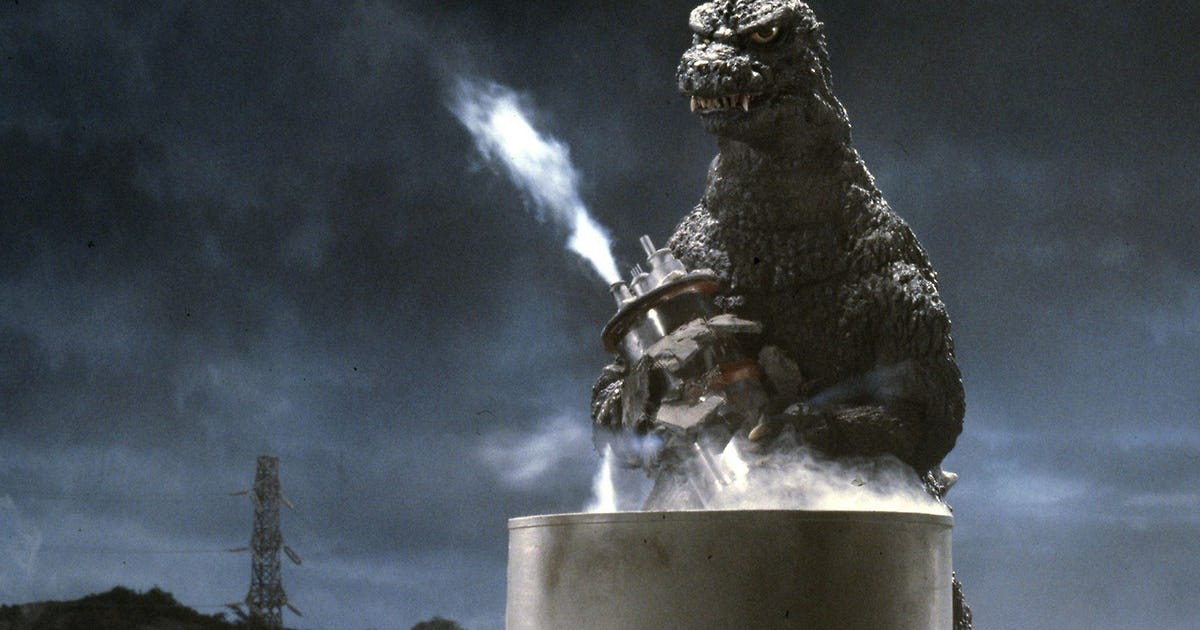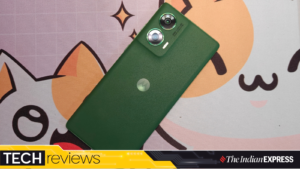There’s a scene in Godzilla 1985 wherein, from the safety of the Pentagon, a brooding Raymond Burr witnesses the destruction of Tokyo at the hands of a giant dinosaur via satellite feed. The shocking assault prompts much soul-searching and brow-furrowing from the military brass around him, to which Burr’s character — seasoned American journalist Steve Martin — eventually musters a response. “He’s looking for something… searching,” he intones. “If only we could figure out what it is before it’s too late.”
In any other movie, it might have been a call to arms — especially for a top-billed actor portraying a character defined by his vocation’s investigative regard. Instead, as one of the world’s major cities crumbles in the face of a global existential threat, the men opt to stay put and ponder… for the entire movie. They might as well have been watching Supermarket Sweep.
It’s a common criticism aimed at this bastardized edit of the 1984 Japanese film Return of Godzilla — reworked by Roger Corman’s infamous New World Pictures for U.S. consumption, and featuring new scenes and characters to fill out an otherwise selectively trimmed presentation. Roger Ebert famously awarded the movie one star in a 1985 review, underlining the movie’s “phony profundity,” “consistently bad” dialogue and poor lip-syncing as emblematic shortcomings of “a bad movie with [failed] aspirations of being a good bad movie.” It went on to pick up two Razzie nominations, and has been largely swept under the carpet ever since — perhaps, in some small regard, unduly.
One could easily argue that Godzilla 1985 was keeping a great (well, maybe not great) American tradition alive. Burr — once of Alfred Hitchcock’s Rear Window, and later the TV crime series Ironside — had previously been the artificially-inserted star of 1956’s Godzilla, King of the Monsters, the U.S. edit of the original 1954 Godzilla. By excising nearly 40 minutes of original footage, including almost all references to the atomic bomb (arguably the defining subtext of the Japanese narrative), and splicing in Burr’s close-quarters observer in scenes that suggested he was interacting with the existing cast, the intention was to make the production more relatable to U.S. audiences. It added a curious layer of ham to proceedings.
But the U.S. release was a hit, and so the practice of violating Japanese monster movies for Stateside consumption didn’t end there. 1956’s Rodan tacked on incongruous new opening that contradicted the film’s own allusions to the flying menace’s volcanic origins. (Future Star Trek icon George Takei, meanwhile, claimed to have voiced “eight or nine” different characters in the awkward dub). 1958’s Varan the Unbelievable was an even worse offender — retaining only 15 minutes of the OG film’s footage and none of iconic composer Akira Ifukube’s score. In its place was an entirely new plot shaped by new scenes with U.S. actor Myron Healey, generic library music, and an inexplicable dearth of monster carnage. The metamorphoses continued into the ‘60s, as Mothra vs. Godzilla became Godzilla vs. The Thing, and Ebirah, Horror of the Deep became Godzilla vs. the Sea Monster (and so on).
Was Godzilla 1985 as egregious as Ebert had suggested? Well, given that the franchise-reviving Japanese cut had made a concerted effort to return to the serious tone of the original after years of child-friendly slapstick (see Godzilla vs. Megalon), New World Pictures’ inclusion of banal comic relief via ginger-haired “Major McDonough” (Travis Swords) cheapens the movie dramatically. “That’s quite an urban renewal program they’ve got going on!” he quips, as Tokyo is razed to the ground. The evident Dr. Pepper product placement, meanwhile, is just as obnoxious — with vending machines and soda cans vying for attention in the newly-shot footage, as Godzilla elsewhere showed up in two thirst-quenching commercials for the beverage as part of a wider $10 million advertising campaign.
Most heinous, though, is the revising of major plot points for the sake of American virtuosity. For example, in the Japanese release, a Russian submarine officer dies while attempting to prevent the launch of a nuclear weapon — while the U.S. release makes it seem like its deployment was his dying wish. No surprises in guessing which major power saves the day by shooting it down in the American release.
Is Godzilla 1985 really as terrible as its reputation suggests? Yes and no.
New World Pictures
These misdemeanours aside, Godzilla 1985 is not entirely worthy of Ebert’s ridicule. The critic’s suggestion that the poor lip sync coordination of the dubbed version was deliberately exaggerated “for condescending laughs” is a reach — this isn’t Kung Pow: Enter the First. And the streamlined editing of the movie (which reduces the runtime by 16 minutes) arguably adds to the entertainment factor of what was, at times, a lethargically-paced movie. Sure, the added footage contributes nothing to the overall plot — but with its Austin Powers-style satellite launches and sci-fi “Super-X” missile launcher scenes, the original The Return of Godzilla was already veering into B-movie territory before Corman and co. had even had a sniff.
Godzilla 1985 wouldn’t be the last Godzilla film to receive a makeover for U.S. consumption — Godzilla 2000, for one, had eight minutes of footage excised while injecting tongue-in-cheek humor via new dubbing dialogue. But New World Pictures’ edit was the last time that extensive reconstruction took place for the sake of Western pandering. Times have changed, and so has our appreciation of the creativity that goes into foreign-language cinema: Today, 80% of Americans prefer to watch a film with subtitles than one with dubbing.
That doesn’t mean that Godzilla 1985 deserves to be forgotten about, though — even if, on the 40th anniversary of its U.S. theatrical release, it remains an obscurity on streaming platforms and home media. As restorations such as the “Red Menace reconstruction” project underline, a faithful fandom still surrounds this dubious, Americanized hatchet job — which, if nothing else, maintains its value as a now-uncommon cultural artifact.
And though the chin-strokers on Letterboxd might tell you that Godzilla 1985 is inferior to the Japanese original, many of them are missing the point. It’s a giant monster movie that amps up the ham-fisted fun. What more do you really want?
Source link
Movies,Science Fiction,movies,horror,science-fiction,godzilla,entertainment,freelance,movie-tv-anniversary,homepage,hp-latest,adex-light-bid,freelance-recs



Average Rating